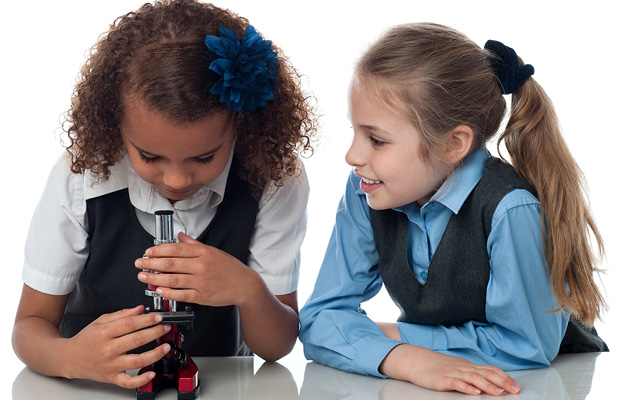
How do you support science teaching and learning in your primary school? Whether a new science leader or a seasoned hand, below are ten tips to ensure that all of your children receive a first class science education.
1. Audit
Audit your school to see how much science is being done. Include questions such as:
- How many hours a week are spent on science?
- How much is of this is practical science?
- What resources do teachers need to run effective practical sessions? Organise these into topic areas.
- Try and find out what kind of support teachers and teaching assistants need. Is it subject knowledge? Developing key skills? Working scientifically? Assessment?
- Are there other opportunities for science learning? Is there a STEM Club? Established school trips? Science theatre groups? Can parents come in to speak with children?
2. Governors
Inclusion of governors and school leaders will help ensure that science is at the forefront of your school development plan. This framework supports discussions between governors and school leaders and can also be used with other colleagues.
3. Staff training
Your audit should help to identify development needs of individual teachers, enabling you to find appropriate CPD for them and get it booked in early! Most state funded schools will be eligible for a bursary to help fund science, maths, computing and D&T courses. High quality staff development at little and in some case no-cost to the school should be an attractive proposition to head teachers! There is always the option of bespoke training in school if a twilight session is more appropriate. You can search for CPD by subject, location and age range.
4. Equipment
Knowing what equipment you have and what is required to support practical work is key to the delivery of effective science lessons. It will also help to pre-empt those last minute trips to supermarkets to pick up consumable items. This guidance details equipment that is required at primary to do this, providing a great starting point for co-ordinators.
Remember that this can be a gradual process. Build up a box of resources for different topics/year groups, label them and put in a contents page. Encourage teachers to put back all equipment at the end of a session. A signing out sheet is useful, as there’s nothing worse than running around a school looking for thermometers that have gone astray and are hidden in the back of a colleague’s classroom!
5. Resources
There is a lot of support out there for teachers, in terms of free resources and friendly advice. The Primary Science Resource page details some free resources for all year groups and offers hints and tips for running activities in class. Stuck for a lesson linked to Earth and Space? Try this Earth and Space list of resources.
6. Primary science initiatives
There are often projects going on which support primary science. You should have received your ‘Crunch’ box from the Welcome Trust. The box contains equipment for carrying out practical activities, which aim to get children thinking about food, health and sustainability. Our Crunch resources link to other lessons across the curriculum and include investigations, discussion and drama activities.
7. Space as a context
Tim may be back on Earth, but space continues to excite children and is a great context for science lessons. With the controlled descent of Rosetta due on the 30 September why not find out more about this European Space Agency, (ESA) mission? These lovely animations tell the story of the Rosetta Mission and can be linked to practical activities in the Rosetta resources.
With the ExoMars mission set to explore signs of life on Mars think about how this might be done. This 'Do martians exist?' animation follows the ESA mascot Paxi as he searches for life on the Red Planet. Get your classes searching for life on Mars in different soil samples in the resource, 'Is There Anyone Out There?'.
8. STEM Ambassadors
Have you thought about getting a STEM ambassador in to share their experiences? Including apprentices, architects and farmers, they will all be using science skills in the jobs and aim to inspire children to enjoy STEM subjects.
9. Recognition
Once you’ve set out your priorities, you could well find that the action plan you’ve put in place could go some way towards a formal ward or accreditation. It could also be a way of ensuring that science keeps a high profile within the school. Popular awards include: Space Education Quality Mark and the Primary Science Quality Mark.
10. Get Reading!
Did you know that STEM Learning produces a termly primary magazine, including ideas for lessons from teachers and CPD listings? These are sent to every school, so go and ask your head teacher for it and put it in the staffroom. You never know there may be a minute or two in between lunch and marking, when you can have a quick read!
If you are looking for advice on leading science in your school, or even about finding the perfect resource for a lesson, then post a question on our primary community group:
